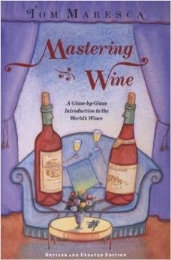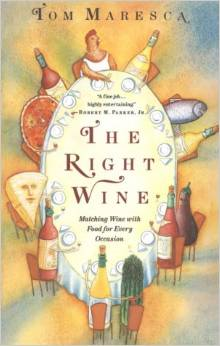Sometimes the success of a dinner party depends not just on your planning and execution but also on your good luck. In the case I have in mind, a quite nice dinner was kicked up to another dimension of pleasure by the wines we served with it – wines from a mixed case that we had lost track of and had brought home from storage just a week or so before this occasion.
The dinner, arranged on necessarily short notice, was for two visiting out-of-town friends. We wanted to give them a good meal, of course, but one with familiar dishes that we could put together within the time and culinary resources we had available. We settled on a first course of pasta alla carbonara, which prepares and cooks easily; a main course of osso buco, which we could make up entirely in advance; a cheese course, which requires no work at all; and for dessert a simple apple tart, which Diane is always happy to toss together. A nice meal, but not extraordinary.
What made this dinner distinctive was its wine and food pairings. The first of these was made possible by Champagne originally bought for long-past holidays and the rest by that mixed case of wines that had luckily wended its way home just a week before.
Of course, I can and will claim that it wasn’t just luck that I had long ago purchased those wines. But I have to admit that their meshing so perfectly with the courses of this dinner was serendipity, far beyond the reach of cunning. From the 12 available wines, I’d chosen the 3 that I thought would work best with our dishes, but I couldn’t know how perfectly they would match up. I don’t have a super palate, and we all need a little luck sometimes.
.
Our first piece of good luck: For aperitifs, a fine grower Champagne, an NV “Élégance” from Vincent Couche. This mouth-filling, aptly named wine was biodynamically grown: 84% Pinot noir, 16% Chardonnay, with 3 years on the lees. It started our evening off on a properly savory and substantial note that relaxed all four of us from the week’s busy pace. Memo to self: Keep some of this around.
.
To give our first course a little distinction, we made the pasta alla carbonara with some duck bacon we had on hand (luck again) instead of the usual pancetta. This made for a richer but less assertively flavored dish that paired beautifully with a bottle of 2008 Castello di Volpaia Chianti Classico Riserva. Volpaia’s high-altitude vineyards characteristically yield wines of great elegance and restraint, and this bottle proved to be a perfect, almost interlocking match with this more restrained version of carbonara.
.
.
Osso buco is always richly flavored: long-cooked veal shank on the bone creates a wonderful sauce around itself. But this is still veal, so it’s not an aggressive flavor but a mild, insinuating one. To my mind, this dish wants the gentle suaveness of Barbaresco, so I opted to match it with a 2004 Marchesi di Gresy Barbaresco Martinenga, a beautiful wine from one of the greatest crus of the appellation, just – at 17 years – reaching its peak of mature, woodsy flavors.
.
With the cheeses, I went a different direction, with a slightly more assertive wine: a 2004 Château Lafon-Rochet, still from that case. Equally as old as the Barbaresco, this Saint Estèphe (55% Cabernet sauvignon, 5% Cabernet franc, 40% Merlot) had also evolved to a perfectly balanced state of maturity, which played splendidly with the somewhat battered-looking but still delicious remnants of goat, cow, and sheep cheeses we had on hand. Lafon-Rochet covers 100 acres in a single plot that lies between Lafite Rothschild and Cos d’Estournel. That’s a very nice neighborhood, as the excellent evolution of this wine amply showed.
.
.
The result of not-too-demanding cookery and wonderfully compatible wines was a dinner both guests and hosts loved. Because the interplay between the wines and the dishes brought out the best of both, the whole meal stood out as something special and memorable, making us very happy indeed. As Italian winemakers and chefs have drilled into my head, abbinamento – the matching of the food and the wine you serve with it – is everything. And if you love mature wines as much as I do, you need the luck or cleverness to have squirrelled a batch of them away years ago.




























































